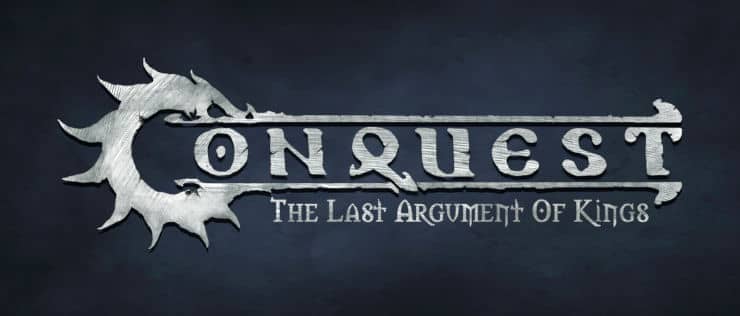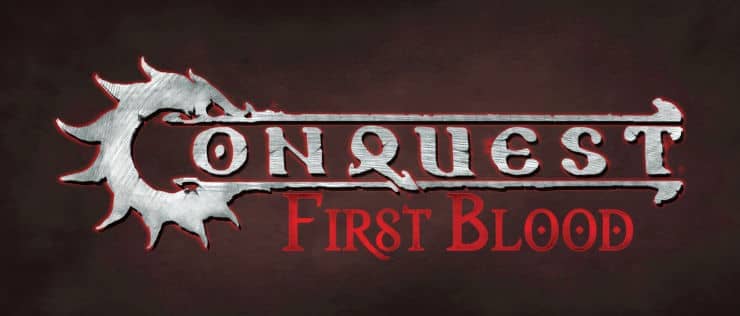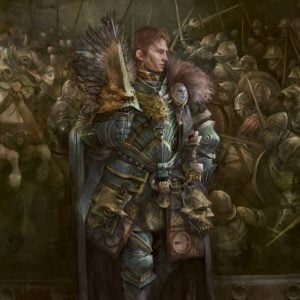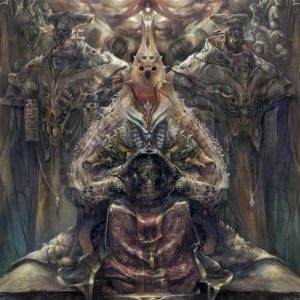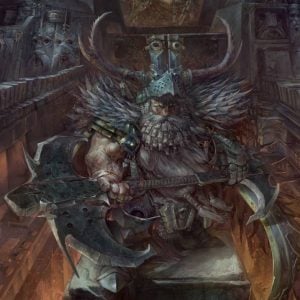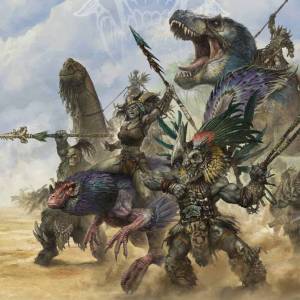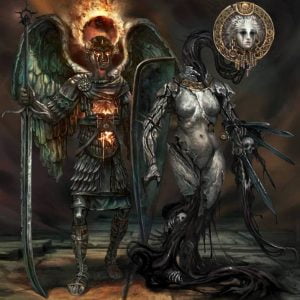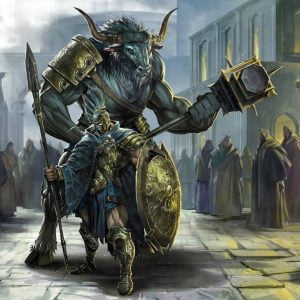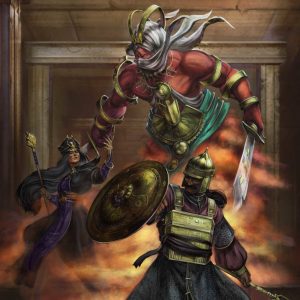“Here we hold domain, on the corpse of Ghiazdraghish, Last of the Stone Old Ones, may our rage ever flow on his dead heart. We, having ruined the Oppressors, having shattered the River-Stone, having destroyed the Chained, we live here in Endless Freedom. From this Memory we start remembering: since we found freedom.”
Touched gently by the faint glow of the pool of lava below, these are the words inscribed over the entrance of the Hold of Ognisros, as they were translated by Hyth of Lantony. It is a fitting light to a Hold aptly named as “Flowing Fire”, for Fire indeed was what gave birth to the Hold, in fire was it baptized and in fire does its entire existence depend upon.
Dug deep into a gaping crevice on the volcanic peak of Lugh’s Seat overshadowing Glencove, Ognisros had managed to stay hidden from humanity’s eyes until only a little over a century ago. The mountain had ever dominated local myths and superstitions, fueled by the tales of Myrddin of Many Names, a legendary druid. It was he that had cautioned against climbing the volcanic peak, naming it as the domain of the Crafter god. With time, these warnings would be incorporated into local mythology until they turned to simple cautionary tales but the disappearance of a handful of exploration expeditions would ensure the mountain would remain effectively undisturbed and entirely unsettled for centuries.
On the eve of the fourth century a folkloric scholar named Ergast of Aust would revisit the tales of Myrddin and propose that the druid was, in fact, referring to a Hold of crafters rather than the domain of the Crafter. Even though his proposal aimed at supporting his theory that Myrddin was in direct contact with the Weavers, for such is what the Weavers called the Dweghom, his publication fueled the interest of Dweghom researchers in scholarly circles. Decades later, Hyth of Lantony, a young enthusiastic and daring initiate at the time, would become the first to locate Ognisros.
According to his notes, the Founding Memory of Ognisros recounts the deeds of Bheodorash, Maker of his Clan, First Raegh of the Hold and Slayer of Ghiazdraghish. Bheodorash is remembered as a ruthlessly effective strategist. While the hated foe remained pinned on the ground by the sacrifice of many, he did not hesitate to order the opening of a chasm so deep that would drown the dragon in the fires below… leading half of his own men to their deaths along with their enemy, responding to his officers’ protests with a simple “They will die fre”. For those knowledgeable in Dweghom mentality, it is perhaps no surprise that he is remembered to be able to hear the song of battle and feel its flow, akin to what the Ardent Kerawegh experience after they have performed their Dheukorro. Indeed, Ognisros remembers proudly on its walls that its founder once stood in the presence of War… and advocated its embrace and subsumption. Knowing this, an error in Hyth’s translation above is brought to light, as it is repeated below:
“Here lies Bheodorash Maker of his Clan, First King of the Hold, Slayer of Ghiazdraghish. He saw freedom in chains. He saw freedom bound. He absorbed freedom and broke the chains.”
It is an understandable error and in many ways fitting, for it captures the essence of Bheodorash’s philosophy. Hyth translated War as Freedom and indeed, Bheodorash’s Memories propose that if existence is a struggle, then War is the manifestation of freedom and to wage it is to live free.

The ways of the Ardent have ever dominated life in Ognisros, forcing all castes into their constant conflicts. The words of the Kerawegh echo the loudest in its halls, fueling struggles and allowing only such intervals between campaigns such as necessary to maintain the population on levels that ensure the survival of the Hold. Even the Tempered have, if not embraced, then adapted to this status quo, readily jumping into battle against the other castes, even as they see their own Hold and lives as the perfect example of why temperance is needed for the Dweghom to escape their bonds to War.
While Hyth found plenty of evidence of their violent disposition in the inscriptions, he understandably assumed that those belonged to bygone eras and unknown foes. Throughout his notes he never paints a picture of an active and violent Hold. Even though he spent days descending and studying the Mnemantic inscriptions on the walls of the corridors, his notes concentrate on the discoveries he made, when they are not marveling at the ingenious and awe-inspiring construction of the Hold itself. He goes on for pages upon pages detailing mechanisms and materials capable of channeling the lava to everyday use, from as simple as lightning to forges and even the opening, and sealing, of giant doorways. Never, during those notes, does he describe the sound of battles or warcries and death wails echoing from the deep, never does he seemed threatened or fearful there. It is highly possible that his visit happened during a ceasefire, one of those reluctant breaks that ensure the continuation of the Hold’s very existence, as the population is allowed to flourish for a while. It is also possible that at last Ognisros stands united under one Raegh… or one Kerawegh. This latest prospect gains perhaps more merit by the final entry on his diary, which was confiscated after his incarceration in Lantony’s monastery for the insane. The entry reads a simple sentence:
They are coming.

